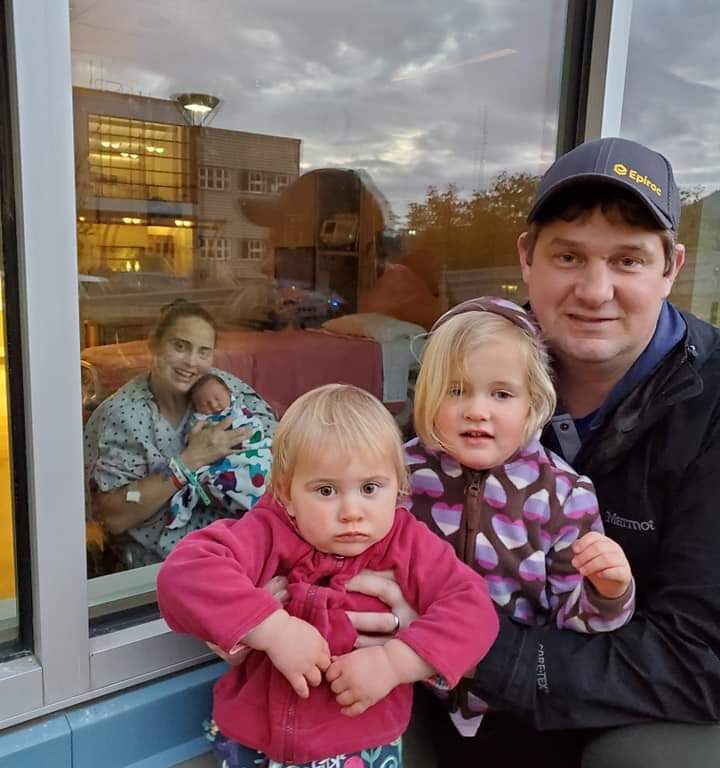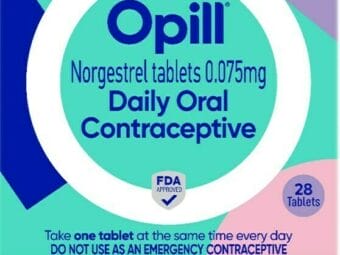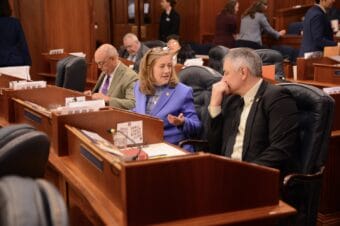
Alaska women who live in rural and remote communities usually travel to city centers to give birth — against incredible geographical odds. It hasn’t always been this way. And now, COVID-19 has made a hard trip even more daunting.
There is no road to the nearest hospital from Haines. It’s roughly 100 miles by small plane or ferry through glacier-strewn mountains. Pregnant women here need to move to Juneau or another city with a hospital a month before their due date.
Lori Carter was pregnant with her third child when COVID-19 hit. Pregnant women are considered at high risk for serious illness due to the coronavirus. She went to Juneau for her first ultrasound in mid-March.
“That’s kind of when everything started falling into place — or falling apart,” she said.
As then-President Trump started announcing travel bans, she wasn’t sure if she would make it home to Haines.
“I thought, well, they can’t shut down this airport yet, hopefully, until I make it home. Because my husband was home with the two little girls.”
She made it home, but she still had to plan to leave again, three weeks before her C-section appointment, just in case she went into labor early. That’s because at the local clinic there is no birth unit and no OB/GYN. The plan: take the ferry to Juneau and live in a rental home with her two daughters.
“I would just tell myself, most mothers don’t have to deal with this. So this is all extra,” Carter said.
It wasn’t always like this
Until the mid 80s, women gave birth in Haines. And if you lived here, Stan Jones was your doctor.
“We took our pets to him, we took our people to him,” said Sheri Loomis.
“Everything was done at the clinic. We didn’t have a vet, so even our animals got stitched up down there from time to time.”
Loomis and her husband Craig started their family in the 1970s. Dr. Jones saw Loomis throughout both her pregnancies. She describes her labors as quick — she was crowning with her second child when she arrived at the clinic.
The room wasn’t quite ready. A nurse put Loomis on a gurney in the open hallway by the parking lot.
“I’m like, almost totally naked. Well, people are coming to church. By this time, the Presbyterian Church is having everybody come from the services, and they’re wandering over to the car. What’s going on? Anyway, you know, I didn’t care at that point. I could care less what I looked like, who saw what — it didn’t matter,” she said.
They picked up steaks on the way home. She said the medical bill was about $400 — with inflation, that would be about $2000 today. The doctor came by the house to check on them for a few days after the delivery.
Now she’s a proud grandma. Her own daughter was in Juneau waiting to give birth when Loomis spoke to KHNS.
These days, a woman in labor in Haines would be likely to get a medevac. But back in the 70s, if things looked too complicated, Dr, Jones popped you on a ferry or a commuter plane to Juneau.
“Once or twice, a baby was born on the ferry,” said Dr. Jones.
He was sitting in his living room, in a creaky rocker. Out the window behind him is the small boat harbor, framed by jagged peaks and the longest, deepest fjord in North America.
“Once a baby was born mid-air and so, you know, it just depends and what the circumstances are, but it certainly is weather-dependent,” Dr. Jones said.
Dr. Jones was Haines’ physician from 1963 through 1989. He attended over 600 births in Haines. No operating room. No backup. Just forceps, his best judgement and sometimes another doctor from University of Washington on the telephone for advice.
“We did not lose any mothers. We lost very few babies. In general I felt our record was very, very good,” he said.
But in the mid-80s things started to change. Now, most women leave to give birth because the clinic tells them to. Women are asked to leave — move, essentially — in the third trimester, usually around 37 weeks.
Dr. Jones says it wasn’t danger that made women stop giving birth out here. He says it was money. He says he had to pay more for medical liability insurance than he made delivering babies.
“To me, it is kind of criminal that women are expected to leave their family and go to a place where there’s a hospital, three or four weeks before their anticipated delivery. Because that makes it difficult on the other children. It makes it difficult on the husband and the relationship,” he said.
Current nurses and doctors say it’s also a good idea to be within easy reach of blood products and an operating room, just in case.
It’s expensive to be out of town for a month — or longer, if the baby is late. It’s common for moms to do it alone, while their spouses work. That’s a month in hospital housing or a motel, eating takeout or hospital food. Waiting.
Togetherness in the age of COVID-19
Last spring, though, Lori Carter and her husband Mike had a plan. She would take their two young daughters to Juneau until her c-section. Then he would arrive and go to the hospital with her. Carter’s mom would come up from Kansas to watch the girls.
She decided to travel by ferry, so they could bring the family truck. They opted to stay in an Airbnb. COVID-safe choices that would allow them to isolate.
The hospital was buttoned up tight to protect patients from COVID-19
“Mike was the only one allowed in and out of the hospital But they had this wonderful setup so that the girls could get a picture outside from a window view of the new baby,” Carter said.
The hospital was buttoned up tight to protect patients from COVID-19, but the hospital let them arrange a family photo through a strategic window: the girls are outside with their dad, and Carter and the new baby are inside. This is togetherness in the age of COVID-19.
Carter’s mom and the girls headed back to Haines to wait for Carter and their new brother to be discharged from the hospital. But when they got home, the family had another surprise. Carter’s mom tested positive for the coronavirus. The whole family was home with a brand new baby and everyone was considered a close contact.
They got lucky: her mom was asymptomatic. She was isolated on the top floor of the house and talked to her granddaughters through the window.
“I had a lot of anxiety this first few days, but just like we’d done with every month and everything through this year, we said we can just take it one day at a time. We can do the best that we can,” she said.
There’s no solution to this struggle in the works, at least not on the policy level. And for Carter, it’s all relative. She sent a video of the new baby boy, Orson. She’s tickling him in the mirror and they’re both laughing. She says she tells him about 2020 and how it was hard and sad. But it brought him into the world, so it wasn’t all bad.
This story was produced as a project for the USC Annenberg Center for Health Journalism’s 2020 National Fellowship.



